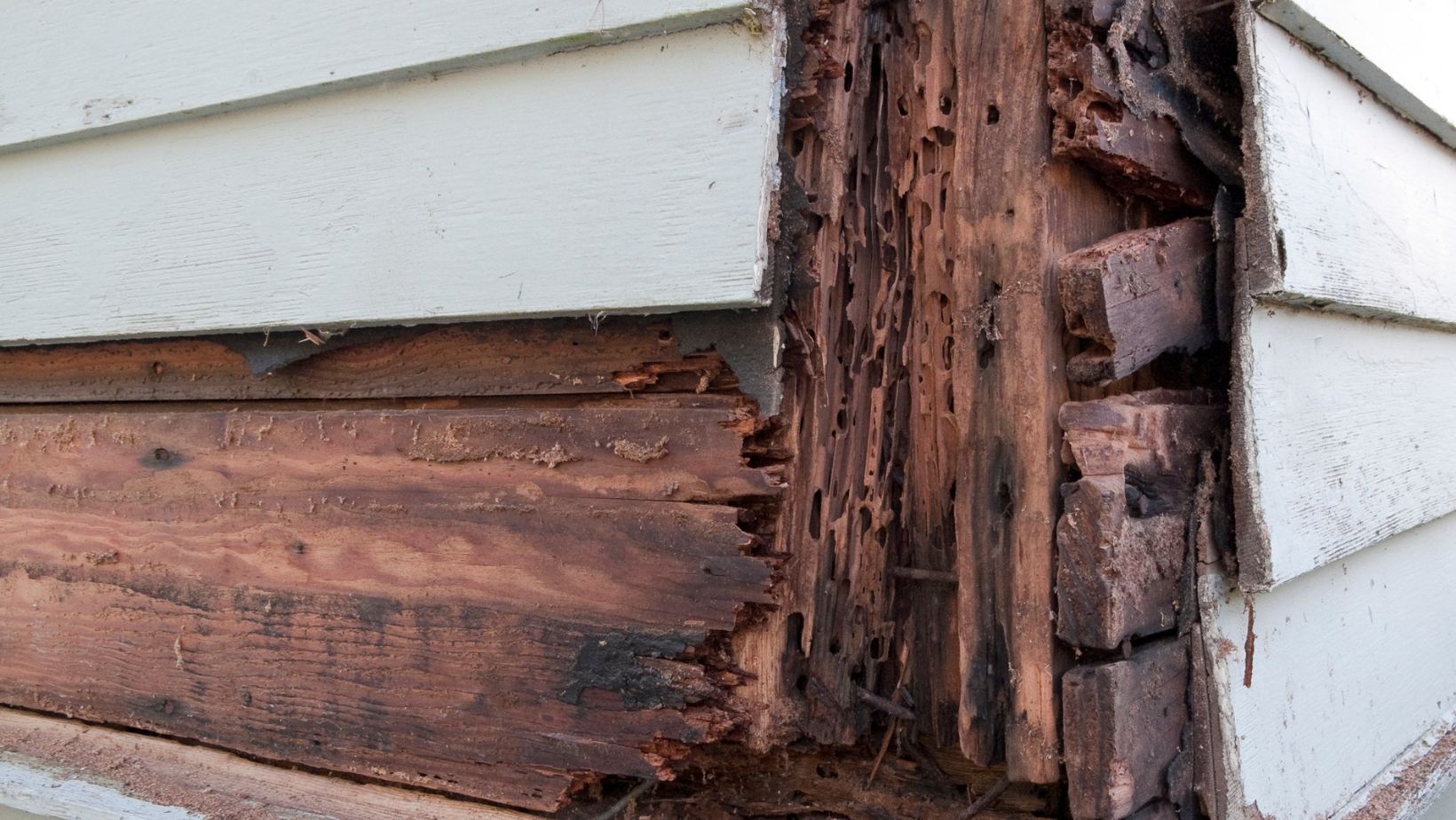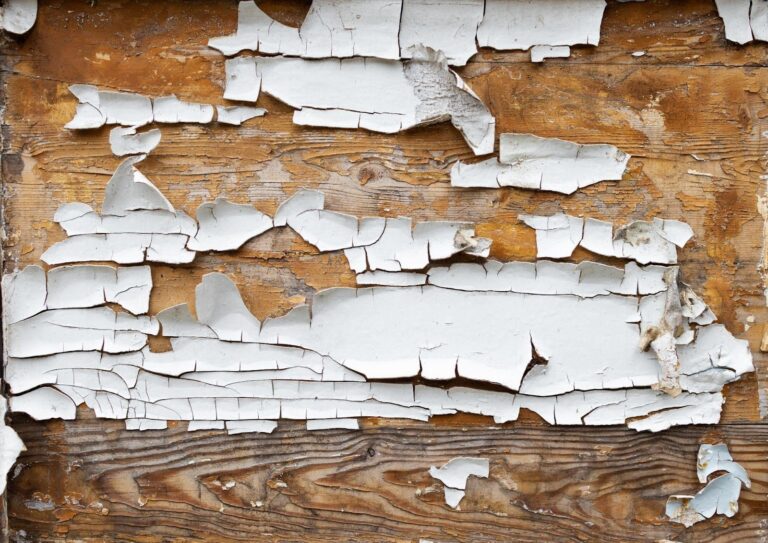Dry rot is one of the most damaging issues a homeowner can face, especially in a damp state like Washington. It weakens wood from the inside out, spreads quietly, and often stays hidden until major repairs are needed. Many homeowners are surprised to learn that dry rot doesn’t actually come from dryness—it begins with excess moisture. Once the fungus takes hold, it can move quickly through walls, floors, decks, siding, and framing.
Understanding how moisture creates the perfect conditions for dry rot can help homeowners protect their property and address issues early. Whether you live in a rainy coastal town or in the wetter parts of the Puget Sound region, the risk is higher than in many other states. This article explains why moisture is such a big threat, how dry rot develops, and what steps homeowners can take to stop it before it becomes a major structural problem.
Why Moisture Is the Root Cause of Dry Rot
Dry rot is caused by a wood-decaying fungus that grows when moisture levels rise above what healthy wood can tolerate. In Washington’s wet climate, even small amounts of trapped moisture can fuel fungal growth. When wood absorbs water from leaky roofs, poorly sealed windows, plumbing issues, or damp soil, it begins to break down. Over time, the fungus spreads through fibers, feeding on the wood’s structure and leaving it soft, brittle, or crumbly.
The problem grows faster in areas with limited airflow—basements, crawl spaces, exterior walls, decks, and siding. While homeowners expect some wear and tear from the weather, many don’t realize how quickly moisture can transform solid wood into something that barely supports its own weight.
In many cases, people only discover the issue after noticing sagging boards, bubbling paint, or a strange musty smell. That’s why regular inspections, especially during rainy seasons, are essential. Many homeowners choose to rely on professional rot repair services when they’re unsure where moisture may be entering.
Where Moisture Problems Usually Start
Moisture can enter a home in dozens of ways, but several common issues show up again and again in Washington. Roof leaks often allow water to drip into attic beams or wall cavities. Window and door frames may lose their seal, letting in moisture every time it rains. Decks and exterior stairs take a constant beating from weather and can soak in water when their waterproof layers age or crack.
Plumbing leaks are another major cause, especially in older homes where pipes weaken over time. Even a slow drip behind a wall can create the perfect habitat for dry rot. Crawl spaces, which often stay damp due to soil moisture, can also feed rot in the subfloor or supporting beams.
Many homeowners overlook condensation, but this hidden moisture is a significant contributor. Poor insulation or weak ventilation can cause warm indoor air to meet cool surfaces, forming tiny droplets that build up over time. This is particularly common in bathrooms, kitchens, and basements.
With so many potential moisture sources, it’s easy to see why homes in Washington are at higher risk. The key is catching these problems early before the rot spreads into areas that require major structural repair.
How Dry Rot Spreads Once It Starts
Once the fungi responsible for dry rot take hold, they can spread surprisingly quickly. The rot thrives in damp, dark places, moving through wood fibers and even across non-wood surfaces to reach new material. In some cases, it can travel many feet from the original moisture source. Homeowners may notice paint peeling, floors becoming uneven, or wood that breaks apart with very little pressure.
The fungus creates spores that travel through the air, which means a single untreated area can eventually affect multiple parts of the home. If rot begins in a deck post or siding, it can extend into the framing behind it. If it starts in a crawl space, it may spread into the subfloor, joists, or supports. This is why it’s so important to address even “small” moisture problems quickly.
Many homeowners who try to fix the problem on their own only remove the visible damage. Unfortunately, dry rot often extends far beyond what can be seen from the surface. Experienced contractors who specialize in dry rot repair solutions know how to locate the full extent of the issue and restore the wood safely.
The Warning Signs Homeowners Should Look For
Dry rot often hides behind walls or under decking, but it still leaves clues. Some of the most common warning signs include:
Soft or spongy wood — Even if the surface looks normal, the wood may feel weak or hollow underneath.
Cracked or peeling paint — When wood absorbs moisture, paint separates from the surface.
A damp, musty odor — This smell often comes from fungal activity behind the walls.
Discoloration — Dark patches, yellow stains, or mold-like growth can appear.
Warped or sagging surfaces — Floors, stairs, and deck boards may start to shift or bow.
Thread-like strands — These fungal “roots” can sometimes be seen in advanced cases.
If homeowners notice any of these signs, it’s usually a sign that moisture has been present for some time. Acting quickly can prevent the rot from spreading further and reduce the overall repair cost.
Why Washington Homes Are More Vulnerable
Washington’s damp climate creates ideal conditions for moisture problems. Heavy rainfall, long winters, and cool coastal air all contribute to higher humidity levels. Homes near wooded areas or bodies of water face even more challenges because the surrounding environment keeps moisture levels consistently high.

Because of these regional conditions, homeowners should be more proactive with inspections, maintenance, and sealing projects than homeowners in drier states. A small investment in prevention can save thousands in repair costs later.
How Homeowners Can Prevent Dry Rot
Preventing dry rot starts with managing moisture. Homeowners can reduce their risk significantly by using simple, ongoing maintenance steps:
Keep gutters and downspouts clear. Overflowing gutters often send water straight into siding or foundation areas.
Repair leaks quickly. Even slow drips can create long-term rot issues.
Improve ventilation. Adding fans or vents in bathrooms, kitchens, and crawl spaces reduces humidity buildup.
Re-seal exterior wood. Decks, stairs, and siding need regular sealing to stay moisture-resistant.
Check caulking often. Window and door seals wear out over time and let in water during storms.
Inspect crawl spaces. Adding vapor barriers or improving airflow can greatly reduce dampness.
For homeowners who live in older homes or areas that experience heavy moisture year-round, a professional inspection every one to two years is a smart investment. Contractors trained in moisture detection can spot issues long before they turn into structural damage.
What to Do If Dry Rot Is Already Present
If rot has already started, quick action is essential. The affected wood needs to be removed, treated, or replaced depending on its condition. Leaving even a small amount of rot behind can allow the fungus to continue spreading.
In most cases, fixing dry rot involves:
- Identifying all moisture sources
- Removing or repairing damaged wood
- Installing proper barriers, sealants, or ventilation
- Treating surrounding wood with fungicides
- Strengthening or replacing structural sections
Because dry rot often spreads farther than expected, many homeowners find it safer to work with professionals who understand how to locate hidden damage and rebuild affected areas properly.
Final Thoughts
Moisture is the true enemy behind dry rot, and Washington’s climate makes it a constant challenge. But with the right knowledge, regular maintenance, and early detection, homeowners can protect their properties and avoid major damage. By paying attention to small moisture issues, inspecting vulnerable areas, and addressing problems quickly, you can keep your home strong, safe, and free of the destructive effects of dry rot.

